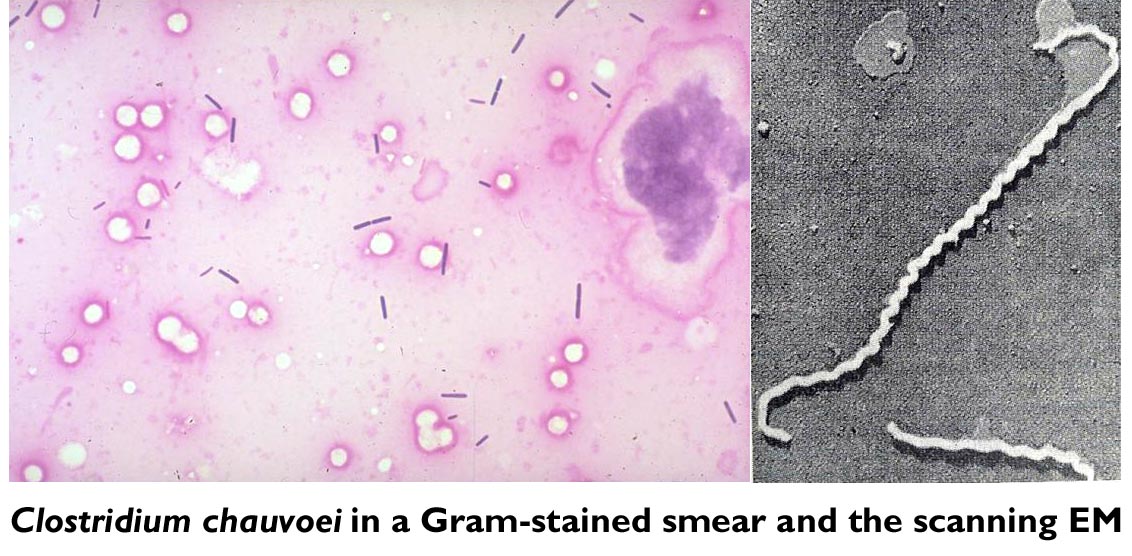
Clostridium chauvoei is a naturally-occuring and ubiquitous bacterium in soil, where it can remain dormant as spores. It's present world-wide and can be a serious source of economic injury to cattle and in sheep ranchers. The spores may become exposed as a result of excavations that bring it to the surface. Hence the presence of fresh sub-soil from the recently dug well may have brought spores out of the ground, to be ingested by the cattle.

Ingested spores may not affect an animal immediately; the trigger for the disease is usually a localized trauma, such as might be sustained by an animal engaged in a dominance confrontation or by too-active rubbing. The muscle damage causes localized hypoxia, favoring the development of any spores that may be present in the area of damaged muscle. Young, fast-growing, and apparently healthy animals are at risk because are more prone to minor injuries in a scuffle; and also because they're increasing their overall size and weight, so they have a high metabolic demand for oxygen as they make the large amounts of internal protein needed for growing myofibers. The circulatory system is pushed to the limit keeping up with the demand and there isn't much reserve for the bruised muscle to use in repair. In the absence of the spores recovery from a minor bruise would take place, but if the spores are present...conditions for an opportunist anaerobe couldn't be better.
 Spores that activate in the hypoxic muscle produce the Gram-positive bacteria in situ; toxins released from the bacteria cause necrosis of the muscle and the nearby capillaries that run between the myofibers. This damage in turn triggers a snowballing cascade of edema, increasing areas of hypoxia, more suitable locations for bacterial proliferation, and yet more necrosis. The rapid death of muscle fibers releases CK and AST and increases serum concentrations.
Spores that activate in the hypoxic muscle produce the Gram-positive bacteria in situ; toxins released from the bacteria cause necrosis of the muscle and the nearby capillaries that run between the myofibers. This damage in turn triggers a snowballing cascade of edema, increasing areas of hypoxia, more suitable locations for bacterial proliferation, and yet more necrosis. The rapid death of muscle fibers releases CK and AST and increases serum concentrations.
The progression of the infection is very rapid—the bugs are making a nice anaerobic and nutrient-rich habitat for themselves as fast as they can—with death ensuing sometimes within a few hours. Often the only "presenting symptom" is a sudden death. Hemorrhage from capillary damage produces the black color that gives this disease its name: extravasated blood rapidly darkens. The bacteria produce gas, which gives a "bubbly" appearance to the affected regions.
This disease isn't curable but it is preventable: commercial vaccines are available that will give protection, but some small scale producers may avoid using them because of the expense or a general distrust of vaccines and "additives" or antibiotics in their animals. This farmer should be advised to get the rest of his herd vaccinated right away, and put them on prophylactic antibiotics for a few weeks until the vaccinations take effect. If he doesn't he's likely to lose more, perhaps his entire herd.